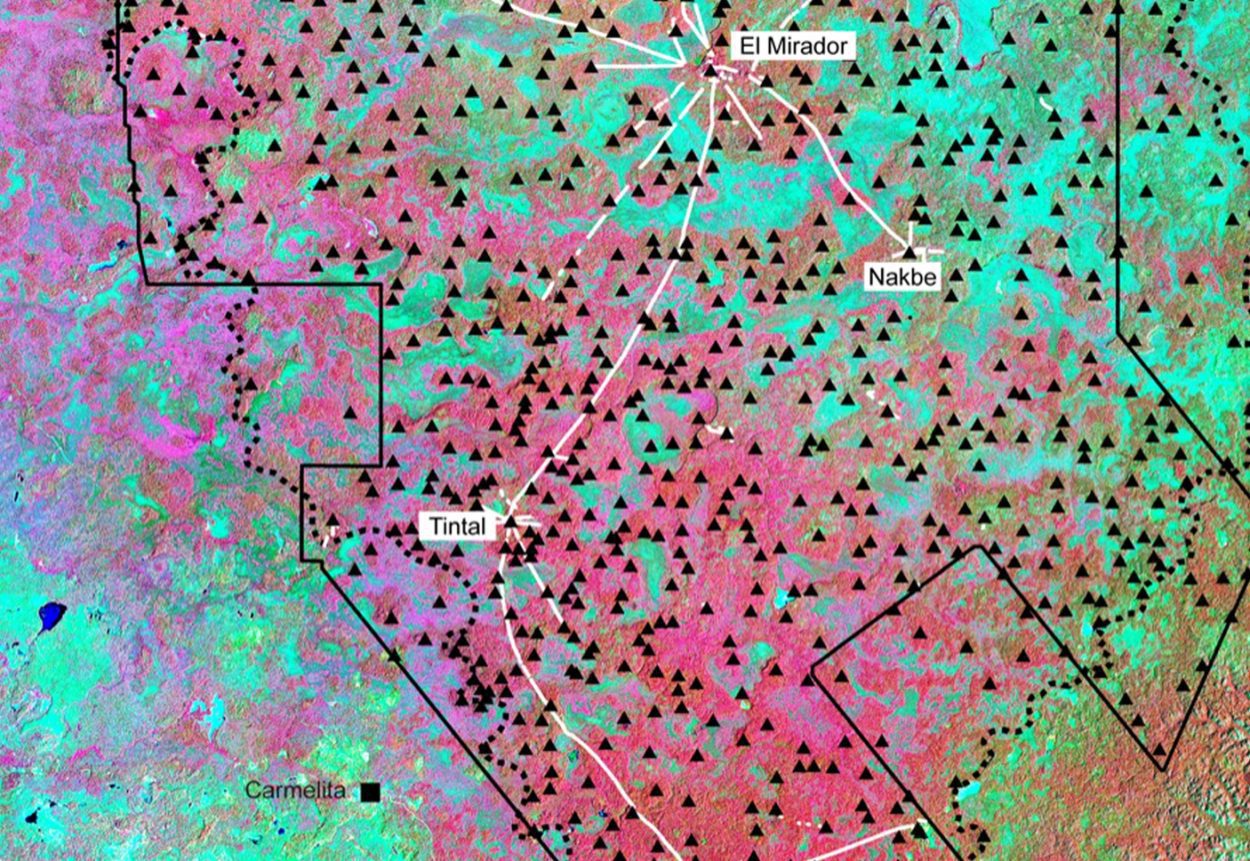An aerial survey within the Mirador-Calakmul Karst Basin (MCKB) of northern Guatemala has revealed a previously unknown wealth of Pre-Classic Maya sites.
The survey was conducted by researchers from Idaho State University in Pocatello using Light Detection and Ranging (LiDAR), a method of remote sensing using light in the form of a pulsed laser to measure ranges (variable distances) to the Earth.
The differences in the laser return times and measuring the wavelengths can be used to compile a 3-D digital map of the landscape, removing obscuring features which could hide underlying archaeological features.
The survey revealed a dense web of more than 700 archaeological sites, including cities, small settlements, pyramids, reservoirs, ball courts, and 177 km’s of elevated causeways.
A majority of the sites date from around 1000 BC to AD 150 during the Middle and Late Pre-Classic periods, overturning previously held believes that the region was sparsely populated during this time in antiquity.
The interconnections between the sites, along with the labour force needed to build such an undertaking of monumental construction so early in the Maya timeline, indicates that the lowlands were home to a wealthy, unified Maya political system and early centralised administrative structure or kingdom.
The study, Published in the Journal Cambridge Core, Concluded: “LiDAR analyses have demonstrated the presence of dense concentrations of new and previously unknown contemporaneous sites, massive platform and pyramid constructions, including triadic groups, numerous E-Group complexes, causeway networks, ballcourts, and reservoirs that required vast amounts of labour and resources, amassed by a presumably centralised organisation and administration. The skeleton of the ancient political and economic structure as a kingdom-state in the Middle and Late Pre-Classic periods has a tantalising presence in the Mirador-Calakmul Karst Basin.”
https://doi.org/10.1017/S0956536122000244
Header Image Credit : Cambridge University Press





